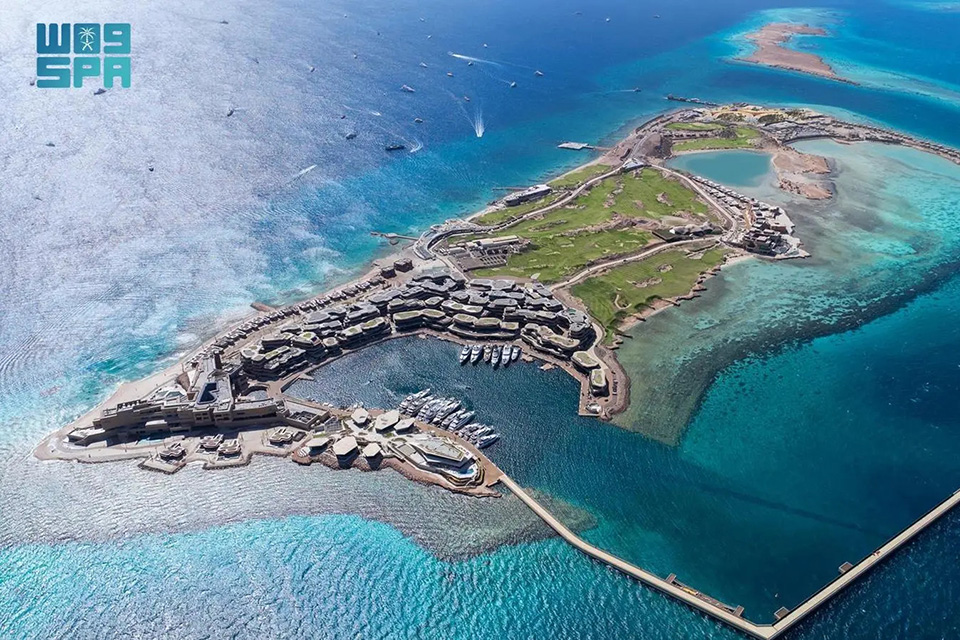- News
Halo Space to Launch 100 Test Flights Per Year in Saudi Arabia
Halo Space says Saudi Arabia presents favorable conditions for both its testing facilities and business environment.
Article Summary:
- Spanish space tourism company Halo Space has built an operational base in Saudi Arabia, from which it hopes to do 100 test flights within the year.
- The company will test its space capsules which will be lifted into Earth’s stratosphere using helium-filled balloons. It will allow passengers to get an unmatched view of Earth.
- Halo Space hopes to start its commercial operations in 2026.
Halo Space is building a test facility in Saudi Arabia to start doing test launches in the kingdom.
The Spanish space tourism firm aims to offer six-hour flights to provide views of Earth aboard a space capsule. To achieve this, it needs to complete a series of test flights. The company has scheduled a test flight this month.
Earlier in August, Saudi Arabia’s Communications, Space and Technology Commission (CST) announced its partnership with Halo Space. The company has built an operational base in the kingdom, which includes a factory and a test facility. There are other Halo Space bases around the world for its year-round operations. In particular, these are in Australia, Spain, and the USA.
Initially, they hope to do 400 test flights within the year, with 100 test flights in Saudi Arabia.
“The decision to localize industrial capabilities, like the space capsule final assembly, testing facilities, and a spaceport is a reflection of the Kingdom’s favorable business environment and ideal conditions for near-space activities,” explained Halo Space CEO, Carlos Mira.
“We believe that Saudi Arabia is uniquely positioned to take a leadership role in the near-space sector, and we are excited to continue building this partnership as we move forward with our mission.”
The Aurora capsule
Halo Space aims for its prototype capsule Aurora to reach an altitude of 30 kilometers. This will be to validate its critical systems.
Passengers will ride in a space capsule measuring 5 meters (16.5 feet) wide and 3.5 meters (11.5 feet) tall. This includes 2.8 square-meter (30 square feet) viewing windows.
The Halo Space capsule’s materials will comprise aluminum alloy and composite materials. The capsule can accommodate up to eight people, plus the pilot. It has a maximum take-off weight of 3,500 kilograms.
The pilot will monitor wind and weather conditions during the capsule’s ascent. This is because these impact the capsule’s trajectory during descent. He or she will also be responsible for starting and controlling the descent.
How the flights will work
The ascent will take two to three hours. The Halo Space craft will then cruise for one to two hours. Afterward, the balloon will go through a ripping and decoupling process. This will allow the capsule to descend for about one hour with the aid of a parachute.
No propulsion system will be used for the space capsule. Instead, it will use a lifting balloon filled with helium to reach Earth’s stratosphere. Its maximum speed will be 12 meters per hour (20 kilometers per hour).
Once the space balloon is operational, tickets to the stratosphere will cost around USD 150,000 each. There is a waiting list for those buying tickets once these are on sale.
Halo Space hopes to finish its test flight program to start commercial operations in 2026. Its long-term ambition is to allow thousands of passengers to experience near-space travel by 2030.
About Halo Space
Halo Space is a Spanish global space tourism company that begun operations in 2021. Its expertise lies in developing stratospheric balloons for tourists. By stratospheric, this means being in the layer of the Earth that is approximately 10 to 50 kilometers above its surface. The company bills itself as a “near-space” tourism firm, with about 60 employees.
Photo: X/Arab News






